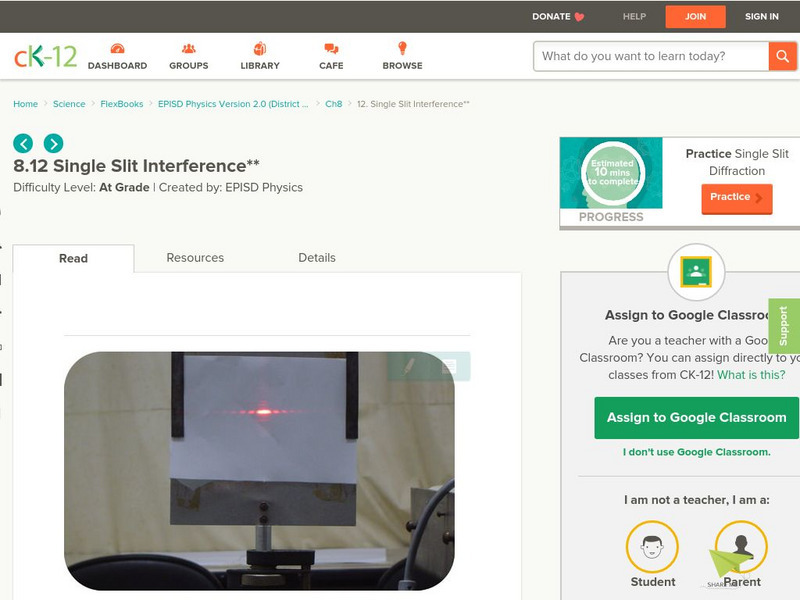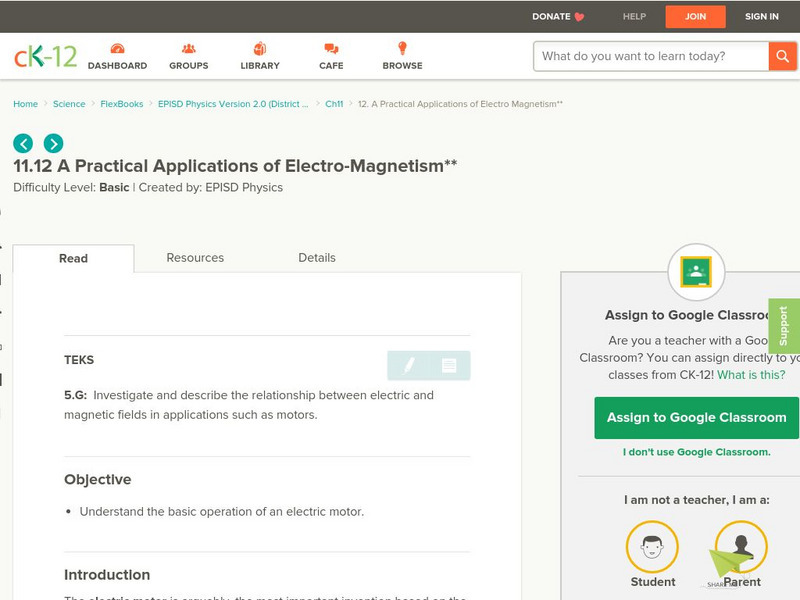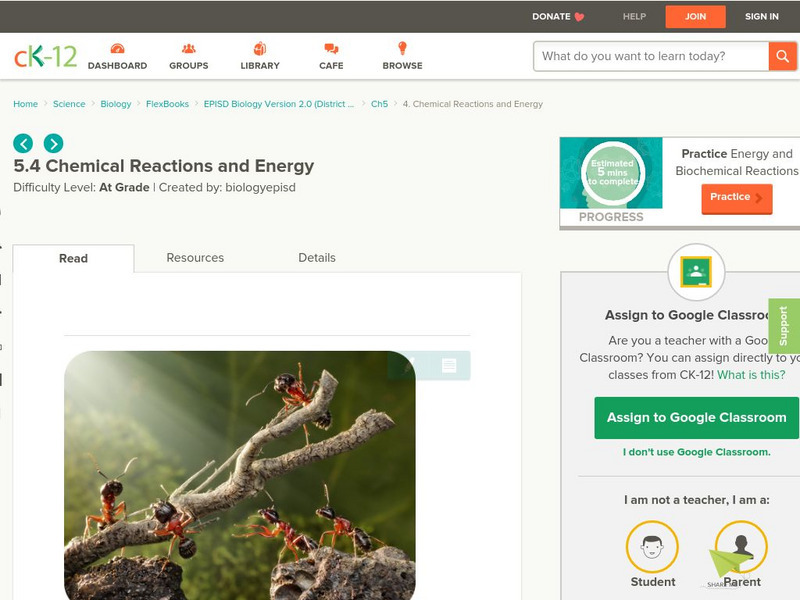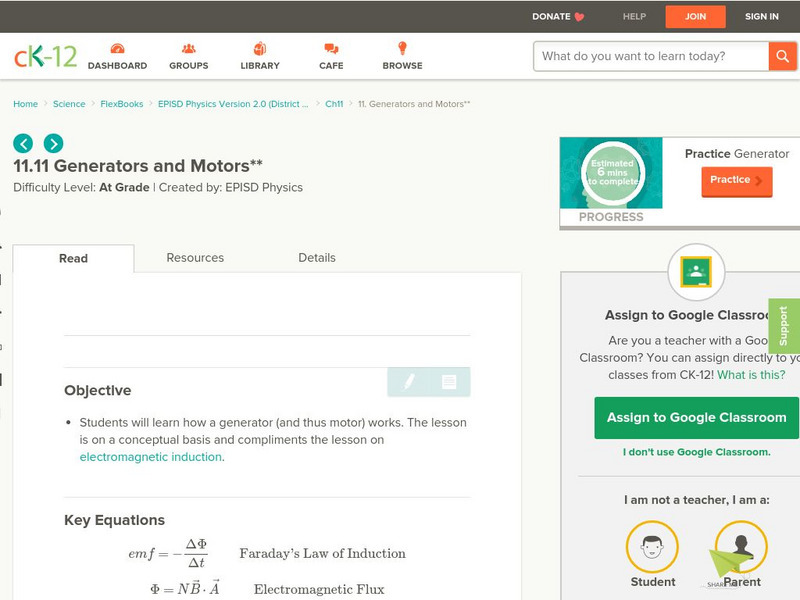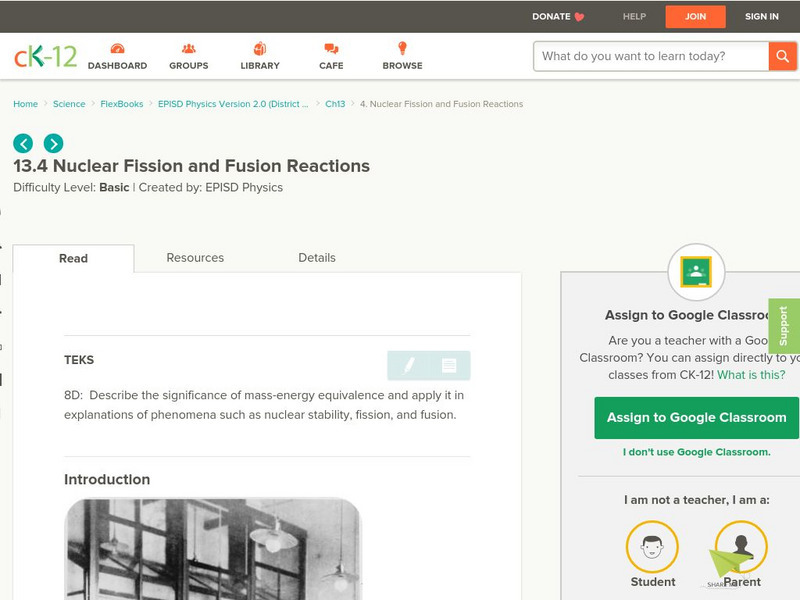CK-12 Foundation
Ck 12: Voltage
[Free Registration/Login may be required to access all resource tools.] This lesson looks at what voltage is and how to solve problems involving voltage. Includes a simulation for exploring how charges work in an electric field.
CK-12 Foundation
Ck 12: Single Slit Interference
[Free Registration/Login may be required to access all resource tools.] Explains what causes single slit interference of light and how to find the wavelength of a single slit interference pattern using a formula.
CK-12 Foundation
Ck 12: Double Slit Interference
[Free Registration/Login may be required to access all resource tools.] Explains the terms diffraction, interference, and interference patterns. Describes the double slit experiment and how to determine the wavelength of a double slit...
CK-12 Foundation
Ck 12: Concave and Convex Mirrors
[Free Registration/Login may be required to access all resource tools.] In this lesson, students learn how to draw ray diagrams and to solve problems for concave and convex mirrors.
CK-12 Foundation
Ck 12: Electromagnetic Spectrum
[Free Registration/Login may be required to access all resource tools.] Students learn what an electromagnetic wave is, gain a feel for the main parts of the spectrum, and work on problems involving basic properties of electromagnetic...
CK-12 Foundation
Ck 12: Coulomb's Law
[Free Registration/Login may be required to access all resource tools.] Students investigate how electric force, charge, and distance all relate to each other in Coulomb's Law. Presents Coulomb's Law, the SI unit for charge, the...
CK-12 Foundation
Ck 12: Coulomb's Law
[Free Registration/Login may be required to access all resource tools.] Explains Coulomb's Law and how to use it to solve problems.
CK-12 Foundation
Ck 12: A Practical Application of Electro Magnetism
[Free Registration/Login may be required to access all resource tools.] This lesson explains how an electric motor works.
CK-12 Foundation
Ck 12: Quantization of Energy
[Free Registration/Login may be required to access all resource tools.] Students will understand how to use Planck's constant to calculate the relationship between a photon's energy and the frequency of emitted light. Includes a...
CK-12 Foundation
Ck 12: Nuclear Power Generation
[Free Registration/Login may be required to access all resource tools.] Describes the design of a nuclear power plant and the production of nuclear energy.
CK-12 Foundation
Ck 12: Chemical Reactions and Energy
[Free Registration/Login may be required to access all resource tools.] Students learn about the role of activation energy in a chemical reaction, and the difference between endothermic and exothermic reactions.
CK-12 Foundation
Ck 12: Nuclear Stability and Binding Energy
[Free Registration/Login may be required to access all resource tools.] In this lesson, students learn how scientists study the properties of stable nuclei in order to draw generalizations about what makes a nucleus stable. They look at...
CK-12 Foundation
Ck 12: Calorimetry
[Free Registration/Login may be required to access all resource tools.] Using diagrams and practice problems, students learn how the units of calories are used to measure the energy of the heat transfer. They also discover how...
CK-12 Foundation
Ck 12: Standing Waves
[Free Registration/Login may be required to access all resource tools.] Students discover how standing waves form through constructive interference, and learn how to solve standing wave problems where either both ends are constrained or...
CK-12 Foundation
Ck 12: Electrostatic Fields
[Free Registration/Login may be required to access all resource tools.] Electrostatic fields are explained and how to solve problems with them. Includes a simulation for exploring how charges work in an electric field.
CK-12 Foundation
Ck 12: Resistivity
[Free Registration/Login may be required to access all resource tools.] The factors that affect resistivity are explained, e.g., wire gauge and length, and conductivity. Also touches upon semiconductors and superconductors. The use of...
CK-12 Foundation
Ck 12: Measuring Current and Voltage
[Free Registration/Login may be required to access all resource tools.] Students are introduced to the ammeter, which measures electrical current, and to the voltmeter, which measures voltage.
CK-12 Foundation
Ck 12: Force on an Electric Current in a Magnetic Field
[Free Registration/Login may be required to access all resource tools.] Students learn how a magnetic field affects moving charged particles or an electric current carried by a wire.
CK-12 Foundation
Ck 12: Transformers
[Free Registration/Login may be required to access all resource tools.] This lesson looks at the function of transformers, at how turns and voltage ratio are related, and at solving transformer problems with mathematics. Includes a...
CK-12 Foundation
Ck 12: Generators and Motors
[Free Registration/Login may be required to access all resource tools.] This lesson explains how a generator and a motor work. Includes a simulation for exploring generators.
CK-12 Foundation
Ck 12: Photoelectric Effect
[Free Registration/Login may be required to access all resource tools.] Students will understand the photoelectric effect and that light has both particle and wave properties. Includes a simulation for exploring the photoelectric effect.
CK-12 Foundation
Ck 12: Atomic Emission Spectra
[Free Registration/Login may be required to access all resource tools.] In this lesson, students learn about atomic emission spectra. Includes a simulation for exploring the Blackbody Spectrum.
CK-12 Foundation
Ck 12: Radioactivity
[Free Registration/Login may be required to access all resource tools.] This lesson explains the types of radioactive decay and how to write nuclear equations. Includes simulations for learning about alpha and beta particle decay.
CK-12 Foundation
Ck 12: Nuclear Fission and Fusion Reactions
[Free Registration/Login may be required to access all resource tools.] This lesson explains the processes of nuclear fission and nuclear fusion. Includes simulations on nuclear fission and on isotope decay.



